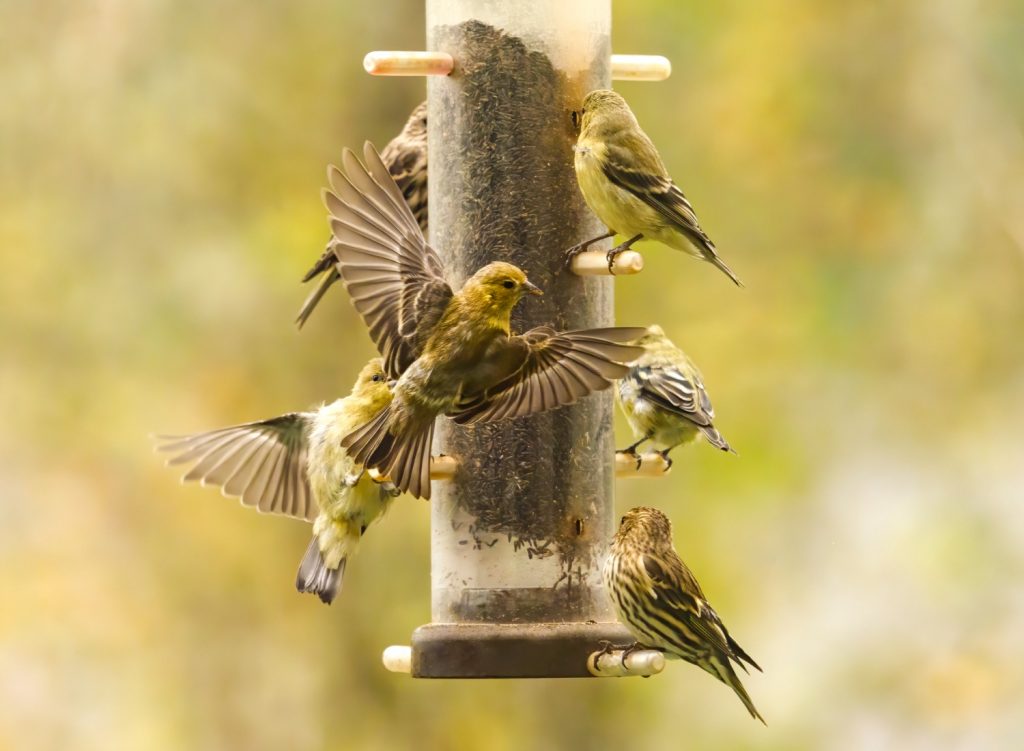How Do Birds Find Bird Feeders? A Guide to the Ultimate Feeder Set-up

Bird watching is a delightful hobby that allows us to connect with nature and observe these winged wonders up close. If you’re an avid bird watcher or just starting out, setting up a bird feeder is a fantastic way to attract various feathered friends to your yard. But have you ever wondered how birds actually find these feeders? In this guide, we’ll explore how birds discover and frequent your bird feeders and tips to create the ultimate feeder setup.
Birds, with their keen senses and natural instincts, have evolved to find food sources in the wild, and these same abilities come into play when they locate your carefully placed bird feeder. From visual cues to social learning, the process is a fascinating one. By understanding these mechanisms and following our recommendations, you can create a haven for avian visitors in your own backyard, making bird watching a captivating and educational experience.
The Natural Instinct of Foraging
Birds are naturally skilled foragers, constantly looking for food sources to sustain themselves and their young. In the wild, they rely on visual cues, memory, and instinct to find food. This same instinct plays a crucial role in their discovery of bird feeders.
Visual Attraction
Birds have excellent vision and can detect colors, shapes, and movement from a considerable distance. This means a well-placed bird feeder with vibrant colors and movement will likely catch their attention. Many bird feeders come in bright hues or are adorned with decorative elements that attract birds and add aesthetic appeal to your garden or backyard.
Auditory Clues
The sound of other birds feeding or the rustling of leaves near a feeder can signal the presence of food. Therefore, when one bird discovers your feeder, its enthusiastic feeding and chirping can act as an auditory invitation, drawing other birds to the scene.
Memory and Learning
Birds possess a remarkable ability to remember locations where they have found food. They will likely return regularly once they have located your bird feeder, especially if the food source is consistent. This is why keeping your feeder stocked is essential, ensuring that the birds associate your yard with a reliable food source.
Social Learning
Birds often learn from one another. If one bird in a flock discovers your feeder, it will likely share this newfound source of nourishment with its companions. This social learning can lead to more and more birds visiting your feeder over time.
Creating the Ultimate Feeder Set-up
Now that we understand how birds find bird feeders, let’s delve into how to set up the ultimate feeding station to attract a diverse range of avian visitors to your yard.
Choose the Right Location
Selecting the ideal location for your bird feeder is crucial. Place it somewhere visible from your home so you can enjoy watching the birds without disturbing them. Ensure the feeder is safe and sheltered, protecting the birds from predators like cats. Placing it near trees or shrubs provides birds with a safe landing and perching area.
Offer a Variety of Foods
Different bird species have varied dietary preferences. To attract a wide array of birds, provide a mix of birdseed, suet, and nectar. Sunflower seeds, millet, and cracked corn are popular choices among many species. Additionally, consider offering specialized foods such as Nyjer seed for finches or mealworms for bluebirds.
Keep it Clean
Maintaining cleanliness is essential to prevent the spread of diseases among birds. Regularly clean your bird feeder, remove old or spoiled food, and sanitize it to prevent mold and bacteria buildup.
Choose the Right Feeder Type
There are various types of bird feeders, each designed to attract specific types of birds. Tube feeders are great for small birds like finches and chickadees, while platform feeders are suitable for ground-feeding birds like doves and sparrows. Hummingbird feeders with nectar can attract these tiny, iridescent birds.
A window bird feeder attaches directly to your window, allowing you to observe birds up close from the comfort of your home. They can attract various birds, including cardinals, blue jays, and titmice, providing an excellent opportunity for birdwatching without the need for binoculars.
Provide Fresh Water
Don’t forget to offer a source of fresh water. Birds need water not only for drinking but also for bathing. A birdbath or small fountain can be great for your bird-friendly setup.
Be Patient
It may take some time for birds to discover your feeder. Be patient and consistent in your efforts. Once the word gets out among the avian community, you’ll start seeing more visitors.
Keep Predators at Bay
Install deterrents like wire mesh or collars on the feeder pole to prevent squirrels and other rodents from raiding the food. Use baffles and netting to keep larger predators like raccoons and cats away.
Bird-Friendly Landscaping
Planting native shrubs, trees, and flowers can create a bird-friendly environment that complements your feeder setup. These plants provide additional sources of food and shelter.
Conclusion
Setting up a bird feeder is a rewarding and educational experience that brings the beauty of nature right to your doorstep. By understanding how birds find feeders and following these tips for the ultimate feeder setup, you can create a haven for a diverse range of bird species in your yard. Remember that bird watching is enjoyable and contributes to the conservation and protection of these magnificent creatures. So, grab your binoculars and a field guide, and get ready to welcome a feathered symphony to your garden.